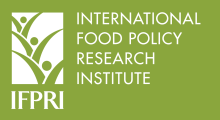Resource information
ecent food-price and economic shocks have further jeopardized the food security of developing countries and poor people, pushing the estimated number of undernourished people over one billion. Known and unknown food-security risks appear to be on the rise. Increasing uncertainties raise critical questions about how to quickly, viably, and sustainably manage familiar risks and emerging new ones. The poor, particularly those who depend on food purchases, both in rural and urban areas, are highly vulnerable to market risks such as high and volatile agricultural prices, which peaked in 2007–08 (Figure 1). In many low-income countries, the food crisis is far from over as prices remain stubbornly high and income and employment opportunities are reduced. In response to the high food prices, which are not matched by equivalent increases in income, poor households are forced to consume less food and to shift to even less-balanced diets. Households also spend less on other goods and services, such as clean water, sanitation, education, and healthcare, which are essential for their short- and long-run welfare. Within households, women tend to be disproportionately hurt.1


